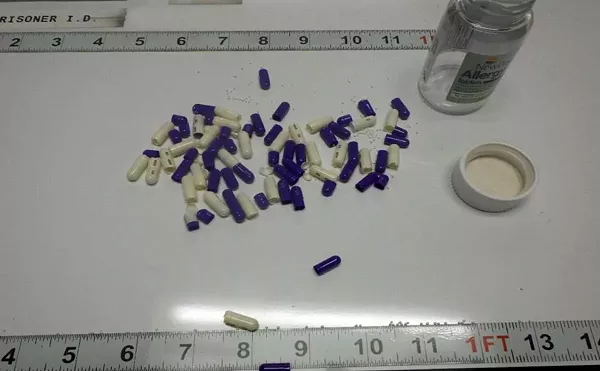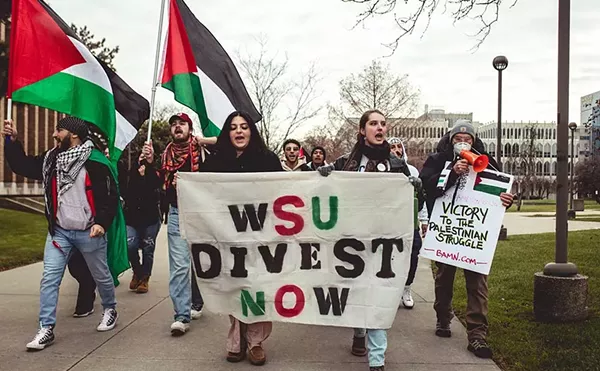Three months from now, Detroiters will elect a new mayor. Barely a month from now, the voters will narrow the field down to the final two.
And so far, very few people seem very interested. Why? The conventional wisdom, meaning the thoughts of those talking heads who talk mostly to each other, is that City Council President Gil Hill is the man to beat, and that his final opponent will be State Rep. Kwame Kilpatrick.
City Councilman Nick Hood ought to run third, followed distantly by Charlie Beckham, Bill Brooks, and a pack of no-names.
And blah, blah, blah. No wonder nobody’s paying attention. I’ve been guilty myself of writing and chattering as if this horse-race handicapping was what matters. It doesn’t. What matters is what any of these characters could do, or at least would try to do for this city.
Can you say what difference any of them might make to this town, where, with the tall ships gone, more than half the adults don’t have cars and more than half the children live below the poverty line?
That was the case, by the way, when they took the census a year ago. It’s worse today. We were still in an era of amazing economic boom then. Not now, and we better not depend on Washington for anything.
Yet what I’m hearing is that Gil Hill has “experience,” while Kilpatrick, young enough to be his grandson, is running on the slogan that the future is “right here, right now.” Whoopee.
Eight years ago, whatever you thought about Sharon McPhail — or Dennis Archer — they each had a distinct approach, and well-defined positions on a wide range of issues.
I can’t say that about any of these guys. That doesn’t mean some wouldn’t make good mayors; and it wouldn’t matter so much if they were running for mayor of Southfield, perhaps, but Detroit’s a mess.
What they do all agree on is that we have to do something about “the neighborhoods.” That’s smart to say, especially if you have seen one. To me, the amazing thing is that there hasn’t been some kind of uprising among the thousands who have to live in those ruins.
But what do you do about it? For starters, look at what has been going on for a decade in a strip of southwest Detroit, where the Bagley Housing Association (BHA) has quietly brought a dying neighborhood back to life.
This hasn’t been easy. In addition to the general sense of hopelessness, there were those who frankly didn’t care as much because the residents were largely Hispanic. And there was, and is, a shadowy Grosse Pointe multimillionaire named Manny Maroun, who owns the Ambassador Bridge and who apparently envisioned turning the surrounding area into some kind of vast truck stop like Breezewood, Pa.
Enter Vincent J. Murray, a psychologist who moved here from New Jersey a dozen years ago and decided to join the parish at St. Anne’s, the original Catholic church founded by our pal Cadillac himself.
He got himself elected director of BHA, which up till then had mainly fought delaying tactics against Maroun’s Marauders. What Murray did was not wage a noisy public battle against the merchant, but instead slyly begin raising money to build new homes and refurbish others.
Within the last five years, Bagley Housing has built 45 new single-family units for low-to-moderate income folks in the streets around the complex of Mexican restaurants that even suburbanites visit. It has also helped arrange at least $800,000 to help owners of older houses fix them up.
The neighborhood has a major new 65-unit senior housing facility almost complete, and a formerly weed-choked park is being converted into an “outdoor activity center” designed to have something to appeal to all generations.
BHA has rehabbed a long-abandoned (1967) school to turn it into a charter high school. It’s also helped restore a magnificently colored mural at St. Anne and Bagley, and sponsored an even brighter new one (“The Cornfield”) across the street. Next on the drawing board: an 89-unit, market-rate condo development near 18th and Lafayette.
Bagley did this by fostering cooperation among a variety of governments and groups — and by creative financing. The city has helped subsidize construction of the houses, for example ($60,000 each) and gives some property-tax abatement to the final buyer as well. Detroit has also tossed in $1 million or so for general infrastructure improvements.
The state has provided low-interest, 5.5 percent mortgages, and both Michigan and Detroit have helped put up funds to renovate the park.
Next time you go to fill up on burritos, drive around the neighborhood and see for yourself what’s happening. This all seems to be working, and I think I know why.
What’s happening at Bagley isn’t just due to a dynamic leader, or a bunch of volunteer suburban kids. It’s happening because the residents themselves think they have a stake in this. Nine of the 10 current board members of the Bagley Housing Association live there, including the priest at St. Anne’s.
Now imagine something like that happening, over and over, on hundreds of blocks from Eight Mile south and Telegraph Road east. Couldn’t happen? Has to happen! I’m still waiting for the candidates to say what they are going to do to make us all want to get involved.
Footnote: Hulking over all of Bagley is the ghastly ruin of the old Michigan Central railway station, another of Maroun’s properties. Last March, City Council talked of tearing it down. Lo and behold, Maroun announced he was going to turn it into a state-of-the-art international trade center. Sheila Cockrel put him on notice he’d better come up with a timetable soon, “otherwise, we’re going to take it down.”
Well?
Jack Lessenberry opines weekly for Metro Times. E-mail letters@metrotimes.com





